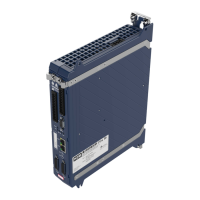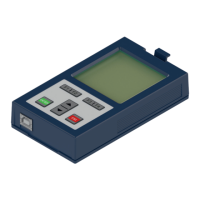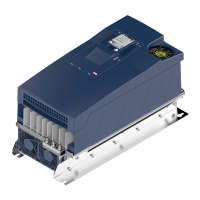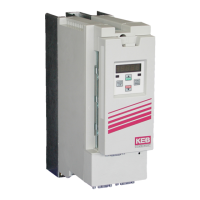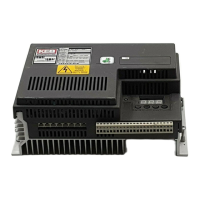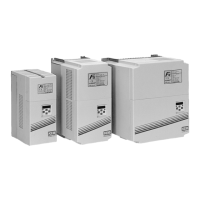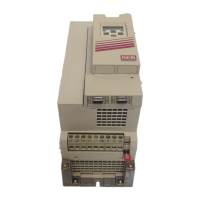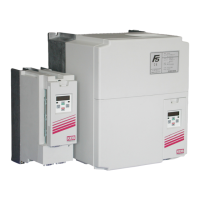If a motor is energized with multiple of the maximum permissible value, it can not
be protected against destruction either by the motor protection function nor by the
temperature sensors. Also too high current can lead to demagnetization of the mo-
tor. Therefore the maximum current can be limited.
Thus the current limit also limits the torque.
Maximum permissible motor current in% of the rated motor current
The limiting characteristic of a synchronous motor is approximately one 1/x charac-
teristic (at activated and correctly parameterized maximum voltage controller) ne-
glecting saturation and similar effects.
This characteristic is defined by dr25 (speed) and dr13 (maximum torque at dr25)
(=> Chapter 6.2.10 Field weakening).
The default value for both parameter is 100%. That means, one assumes that the
motor at rated speed requires also rated voltage for rated torque.
Torque for the definition of the1/x characteristic
Speed for the definition of the 1/x function in % of the rated limiting characteristic speed
(rated value calculated from rated motor voltage, DC link voltage and rated frequency)
➢ The 1/x limiting characteristic is obtained by a negative magnetizing
current (Id), that counteracts the pulse wheel voltage, is preset by the
maximum voltage controller.
➢ If a motor is not suitable for field weakening operation, this Id current
must be theoretically higher than the maximum permissible or max.
available current.
➢ Thus, the achievable torque rapidly decreases (=> 6.2.10.3.2.1 Limit
value at synchronous motors).
The DC link voltage is defined with dr28, designed for the limiting characteristic.
The expected DC link voltage, which is dependent on the mains voltage (√2 *
U
mains
) or the AFE voltage should be entered in this object (=> Chapter 6.2.10.4.2
DC link voltage dependence).
DC reference voltage in V

